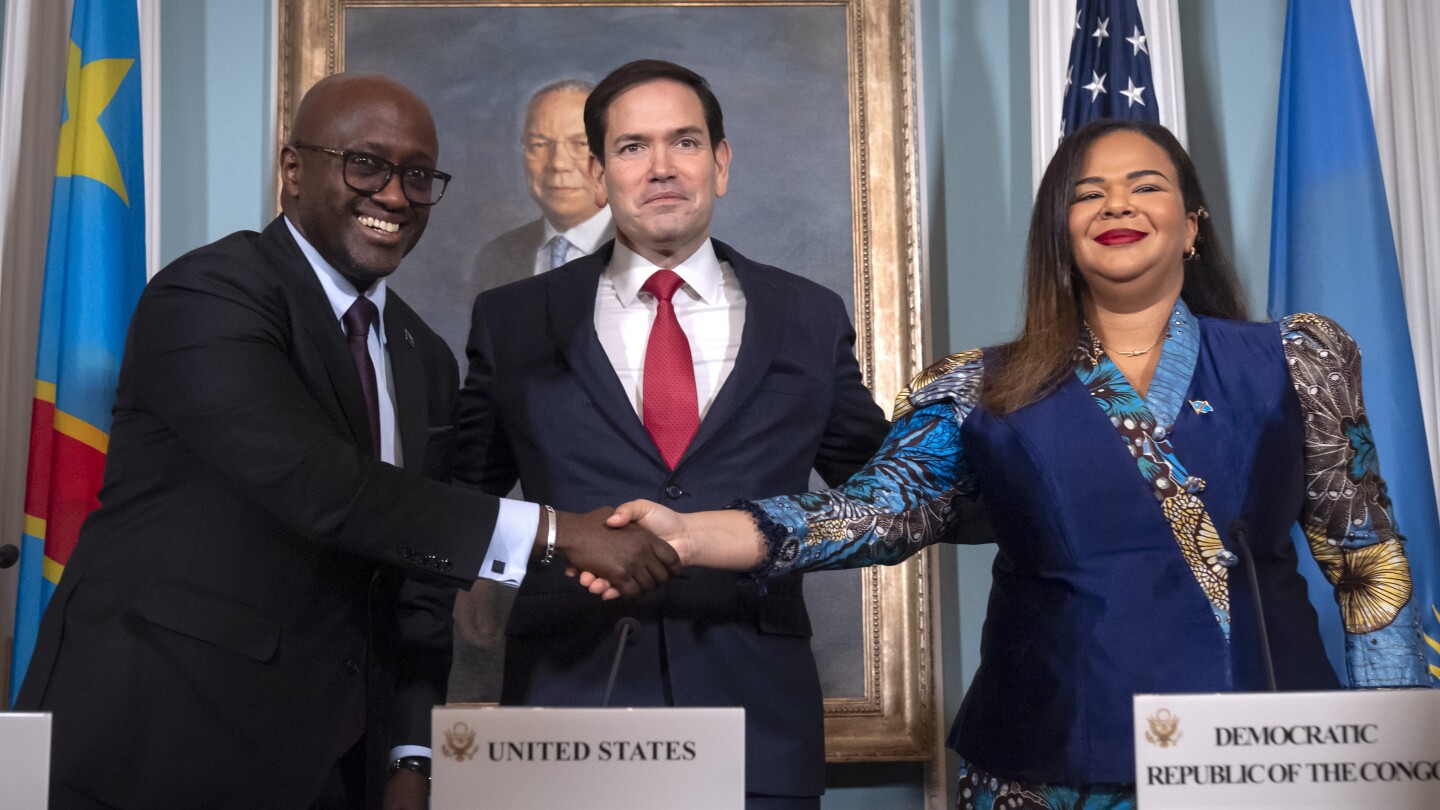WASHINGTON – The Democratic Republic of Congo and Rwanda have signed a US-mediated peace agreement aimed at ending decades of deadly conflict in eastern Congo. The deal, signed on Friday, also opens doors for American access to critical minerals in the region.
Immediate Impact
“Today, the violence and destruction comes to an end, and the entire region begins a new chapter of hope and opportunity, harmony, prosperity, and peace,” President Donald Trump declared to the foreign ministers of the two nations during a White House meeting.
The agreement was finalized at the State Department’s Treaty Room, with Secretary of State Marco Rubio describing it as “an important moment after 30 years of war.”
Key Details Emerge
The Central African nation of Congo has been embroiled in conflict involving over 100 armed groups, with the most potent factions allegedly backed by Rwanda. The ongoing violence has claimed millions of lives since the 1990s.
The agreement includes provisions on territorial integrity, prohibition of hostilities, and the disengagement, disarmament, and conditional integration of non-state armed groups.
While the deal marks a significant turning point, analysts caution it may not swiftly end the fighting as the prominent M23 rebel group claims it does not apply to them.
Industry Response
Many Congolese view the agreement as an opportunity for the US to secure critical minerals essential for global technology, following Congo’s appeal to Trump for support against rebels. The US and China are actively competing for influence in Africa, with Trump pushing for mineral access.
By the Numbers
With 7 million people displaced, the United Nations describes the situation in Congo as “one of the most protracted, complex, serious humanitarian crises on Earth.”
What Comes Next
Congo’s Foreign Minister Therese Kayikwamba Wagner and Rwandan Foreign Minister Olivier Nduhungirehe signed the agreement, expressing optimism but acknowledging the significant work ahead.
“Some wounds will heal, but they will never fully disappear,” Wagner noted. “Those who have suffered the most are watching. They are expecting this agreement to be respected, and we cannot fail them.”
Nduhungirehe emphasized the “great deal of uncertainty” given past agreements were not implemented, but expressed hope with continued US support.
Background Context
The conflict traces back to the aftermath of the 1994 genocide in Rwanda, which led to millions of Hutus fleeing into Congo. Since then, the region has been plagued by conflict resulting in 6 million deaths from attacks, famine, and disease.
Christian Moleka, a political scientist at the Congolese think tank Dypol, called the deal a “major turning point” but warned it “cannot establish lasting peace without justice and reparation.”
Expert Analysis
Analysts suggest the US commitment may hinge on mineral access negotiations with Congo. The largely untapped resources are valued at approximately $24 trillion by the US Department of Commerce.
Hope Muhinuka, an activist from North Kivu province, cautioned, “I don’t think the Americans should be trusted 100%. It is up to us to capitalize on all we have now as an opportunity.”
Regional Implications
Rwanda has faced accusations of exploiting eastern Congo’s minerals, crucial for technologies like smartphones and advanced fighter jets. However, Rwanda denies involvement, complicating its non-involvement claims in the region.
The peace agreement is central to the US strategy to counter China’s influence in Africa, where Chinese companies have long dominated the minerals sector.
The situation remains fluid, with separate talks in Qatar aimed at bringing Congo and the M23 rebels to an agreement. As the region grapples with the implications of the new deal, the path forward remains uncertain but hopeful.
Asadu reported from Dakar, Senegal. AP writers Edith M. Lederer at the United Nations, Justin Kabumba in Goma, Congo, and Ignatius Ssuuna in Kigali, Rwanda, contributed to this report.
